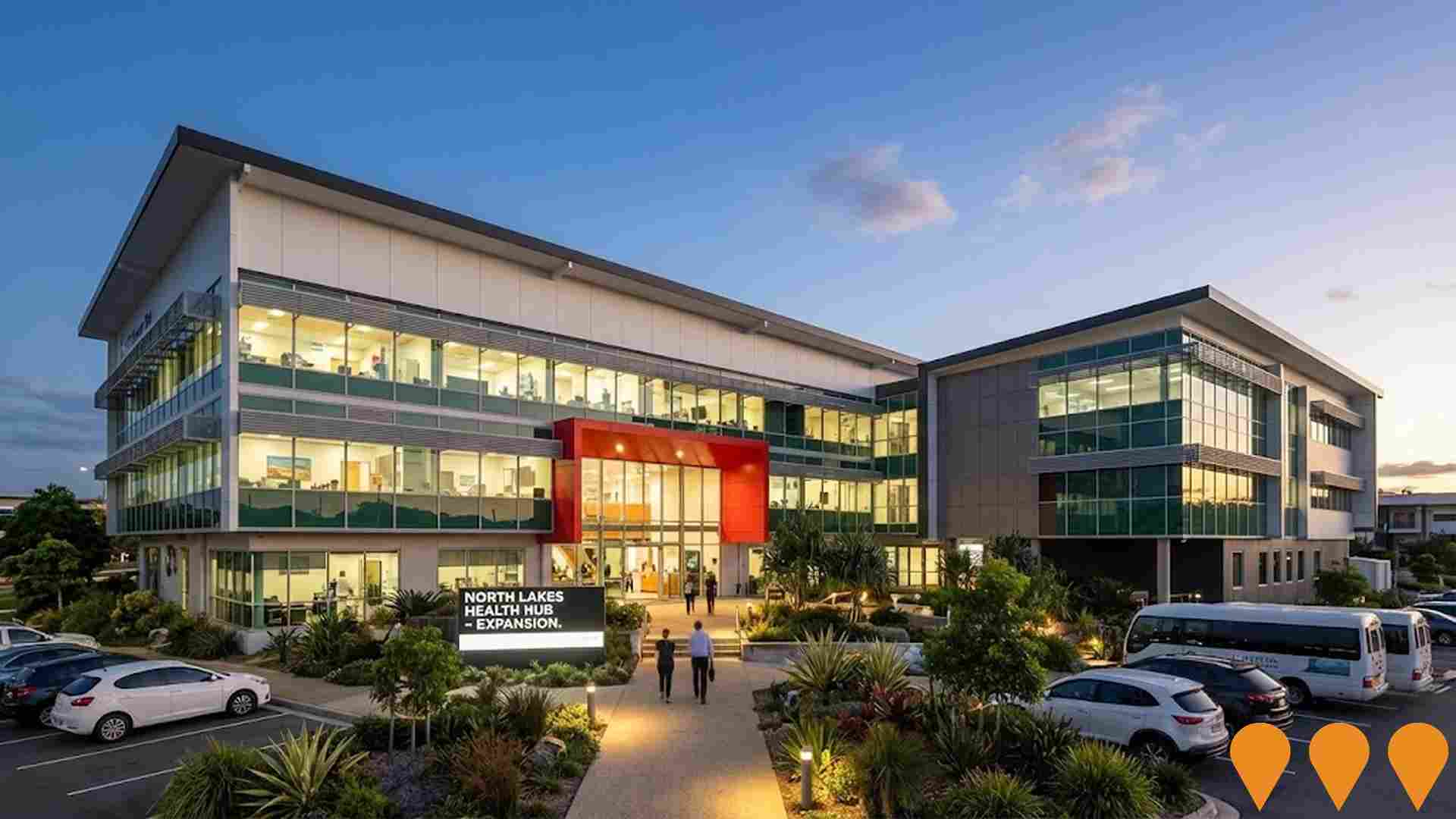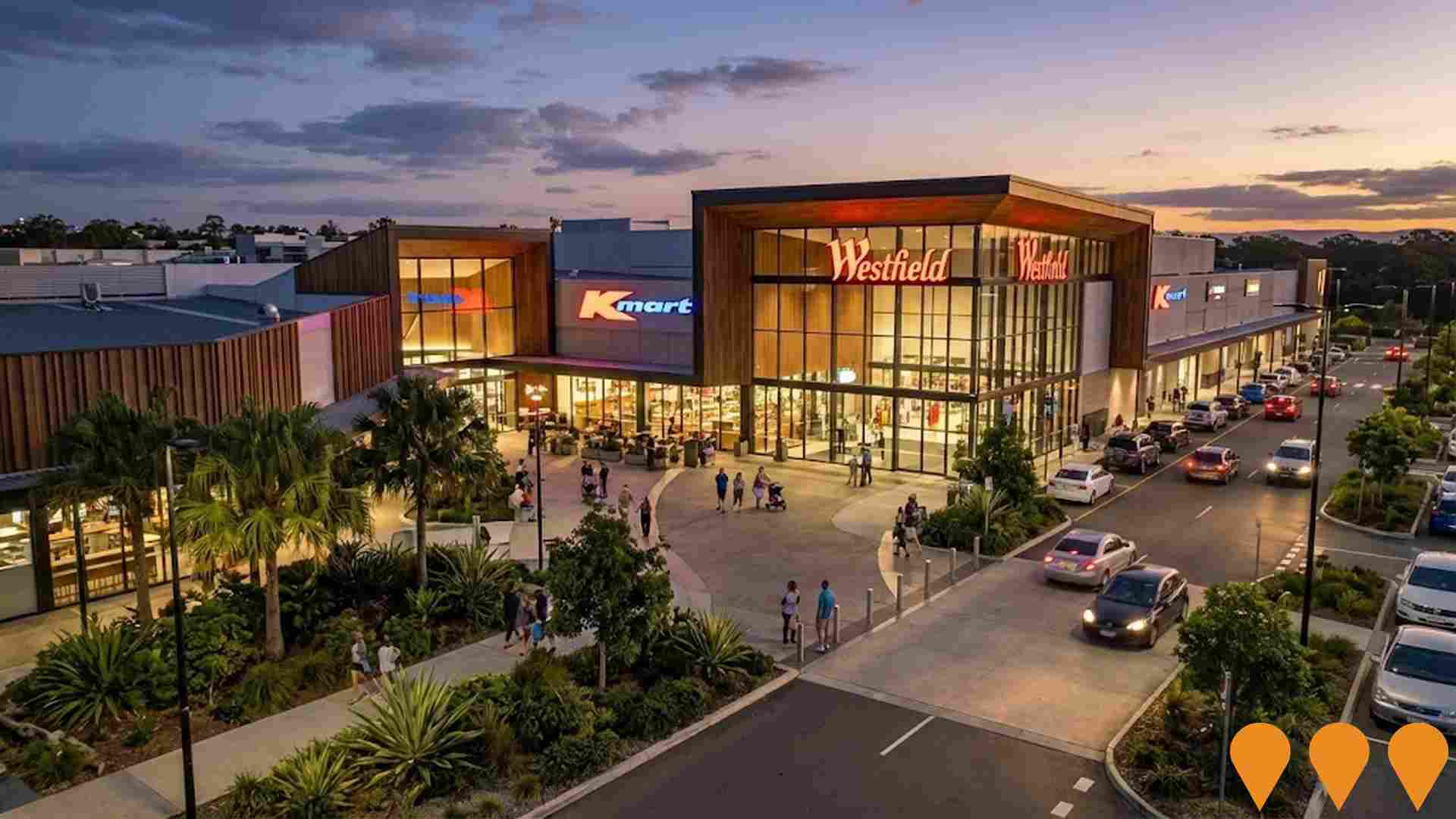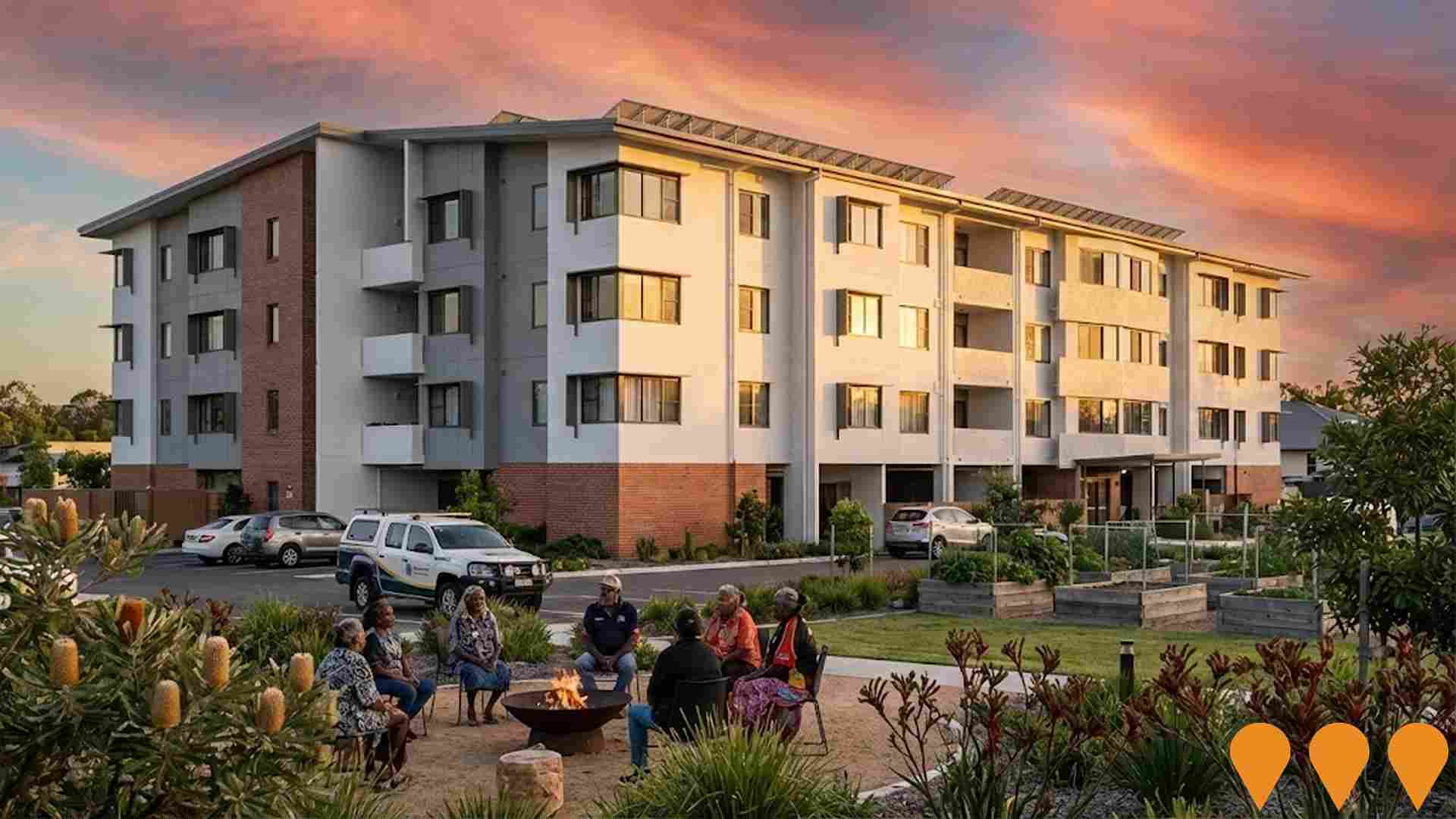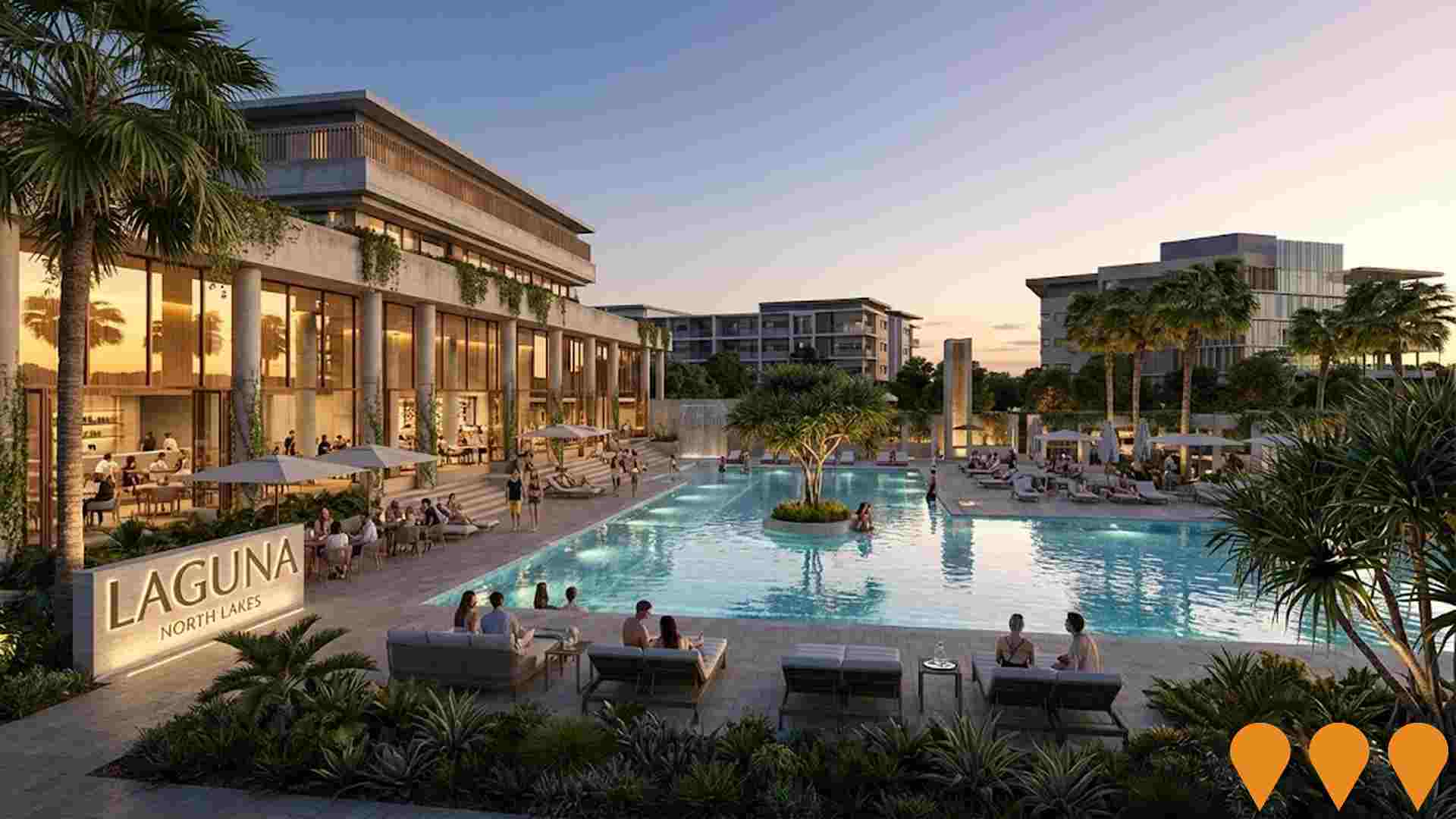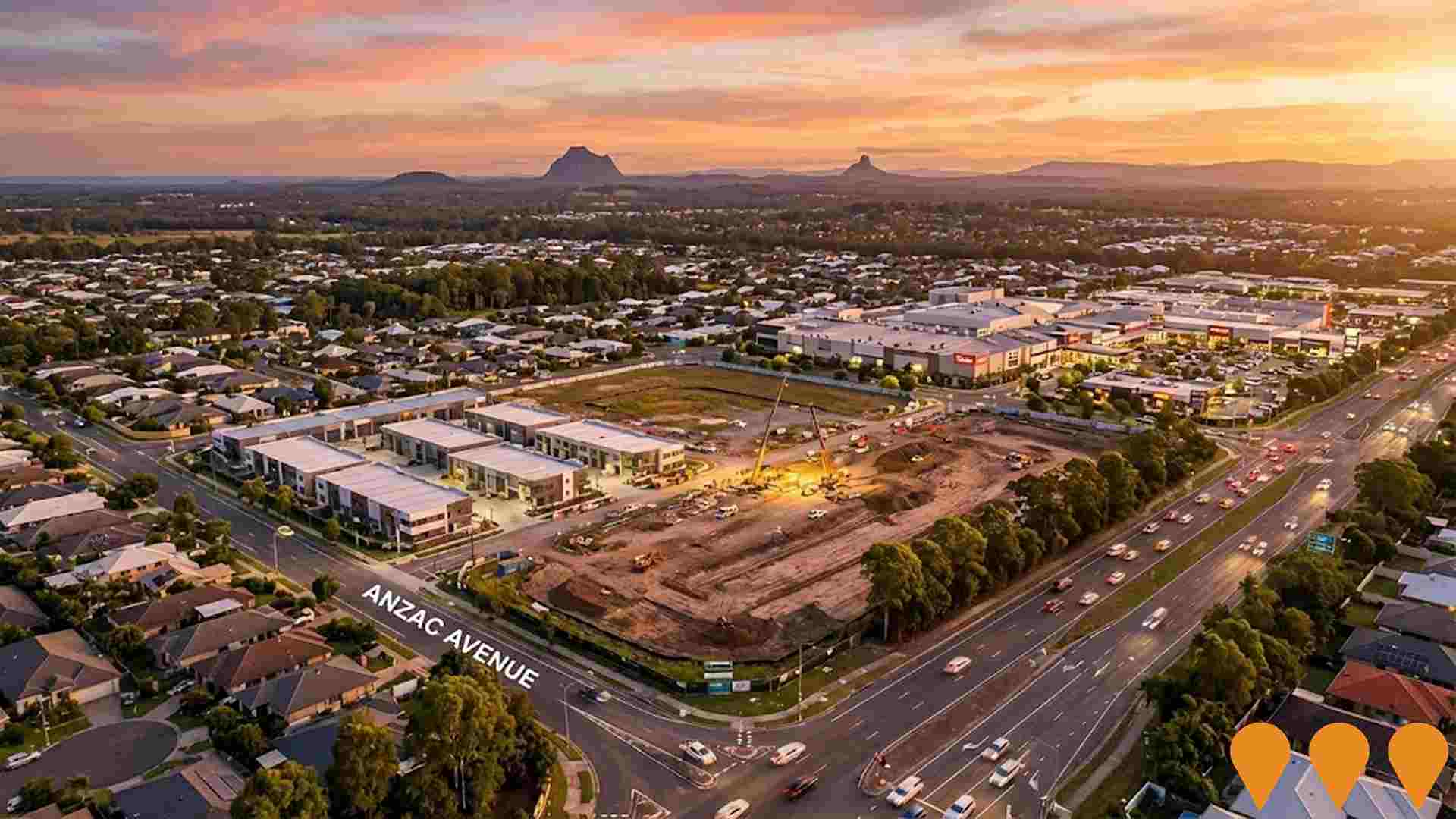Chart Color Schemes
est. as @ -- *
ABS ERP | -- people | --
2021 Census | -- people
Sales Activity
Curious about local property values? Filter the chart to assess the volume and appreciation (including resales) trends and regional comparisons, or scroll to the map below view this information at an individual property level.
Find a Recent Sale
Sales Detail
Population
Population growth drivers in North Lakes are strong compared to national averages based on AreaSearch's ranking of recent, and medium to long-term trends
North Lakes' population is approximately 24,787 as of November 2025. This figure represents an increase of 1,757 people since the 2021 Census, which reported a population of 23,030. The growth was inferred from the estimated resident population of 24,454 in June 2024 and an additional 172 validated new addresses since the Census date. This results in a population density ratio of 2,100 persons per square kilometer, higher than the average across national locations assessed by AreaSearch. Over the past decade, North Lakes has shown resilient growth with a compound annual growth rate of 2.4%, outperforming its SA4 region. Overseas migration contributed approximately 75.5% of overall population gains during recent periods.
AreaSearch uses ABS/Geoscience Australia projections for each SA2 area, released in 2024 with a base year of 2022. For areas not covered by this data and years post-2032, Queensland State Government's SA2 area projections are adopted, released in 2023 based on 2021 data. However, these state projections do not provide age category splits, so AreaSearch applies proportional growth weightings in line with ABS Greater Capital Region projections for each age cohort, released in 2023 using 2022 data. According to population projections, lower quartile growth is anticipated for Australian statistical areas, with North Lakes expected to grow by 939 persons to 2041, reflecting a total increase of 2.4% over the 17 years.
Frequently Asked Questions - Population
Development
Residential development activity is slightly higher than average within North Lakes when compared nationally
North Lakes has seen approximately 31 dwellings granted development approval annually. Over the past five financial years, from FY21 to FY25158 homes were approved, with an additional 2 approved so far in FY26. On average, this results in 7.3 new residents per year for every home built during these years.
This supply has lagged behind demand, leading to heightened buyer competition and pricing pressures. The construction cost of new properties averages $197,000, which is below regional norms, offering more affordable housing options. In FY26, commercial development approvals totaled $14.2 million, indicating balanced commercial development activity in the area. Compared to Greater Brisbane, North Lakes has recorded significantly lower building activity, at 82.0% below the regional average per person. This scarcity of new dwellings typically strengthens demand and prices for existing properties, although building activity has accelerated in recent years. However, this activity remains under the national average, suggesting the area's established nature and potential planning limitations. Recent construction in North Lakes comprises 17.0% standalone homes and 83.0% medium to high-density housing.
This shift towards compact living offers affordable entry pathways, attracting downsizers, investors, and first-time purchasers. This marks a significant departure from the current housing pattern, which is predominantly houses (85.0%). This change suggests diminishing developable land availability and responds to evolving lifestyle preferences and housing affordability needs. With around 6265 people per dwelling approval, North Lakes reflects a highly mature market. Looking ahead, it is expected that North Lakes will grow by 606 residents through to 2041. At current development rates, new housing supply should comfortably meet demand, providing good conditions for buyers and potentially supporting growth beyond current population projections.
Frequently Asked Questions - Development
Infrastructure
North Lakes has moderate levels of nearby infrastructure activity, ranking in the top 50% nationally
Changes to local infrastructure significantly impact an area's performance. AreaSearch has identified 36 projects that could affect the region. Notable initiatives include North Lakes Industrial Development Site, North Lakes Health Hub Expansion, Narangba Heights Shopping Centre, and Azure North Lakes Mixed Development. The following list outlines those likely to have the most relevance.
Professional plan users can use the search below to filter and access additional projects.
INFRASTRUCTURE SEARCH
 Denotes AI-based impression for illustrative purposes only, not to be taken as definitive under any circumstances. Please follow links and conduct other investigations from the project's source for actual imagery. Developers and project owners wishing us to use original imagery please Contact Us and we will do so.
Denotes AI-based impression for illustrative purposes only, not to be taken as definitive under any circumstances. Please follow links and conduct other investigations from the project's source for actual imagery. Developers and project owners wishing us to use original imagery please Contact Us and we will do so.
Frequently Asked Questions - Infrastructure
Moreton Bay Wildlife Hospital
Queensland's first dedicated wildlife hospital, providing emergency and critical veterinary care for native animals including koalas, kangaroos, birds, bats, possums, gliders, reptiles and marine turtles. The facility includes triage, surgery, ICU, rehabilitation areas and a public education hub.
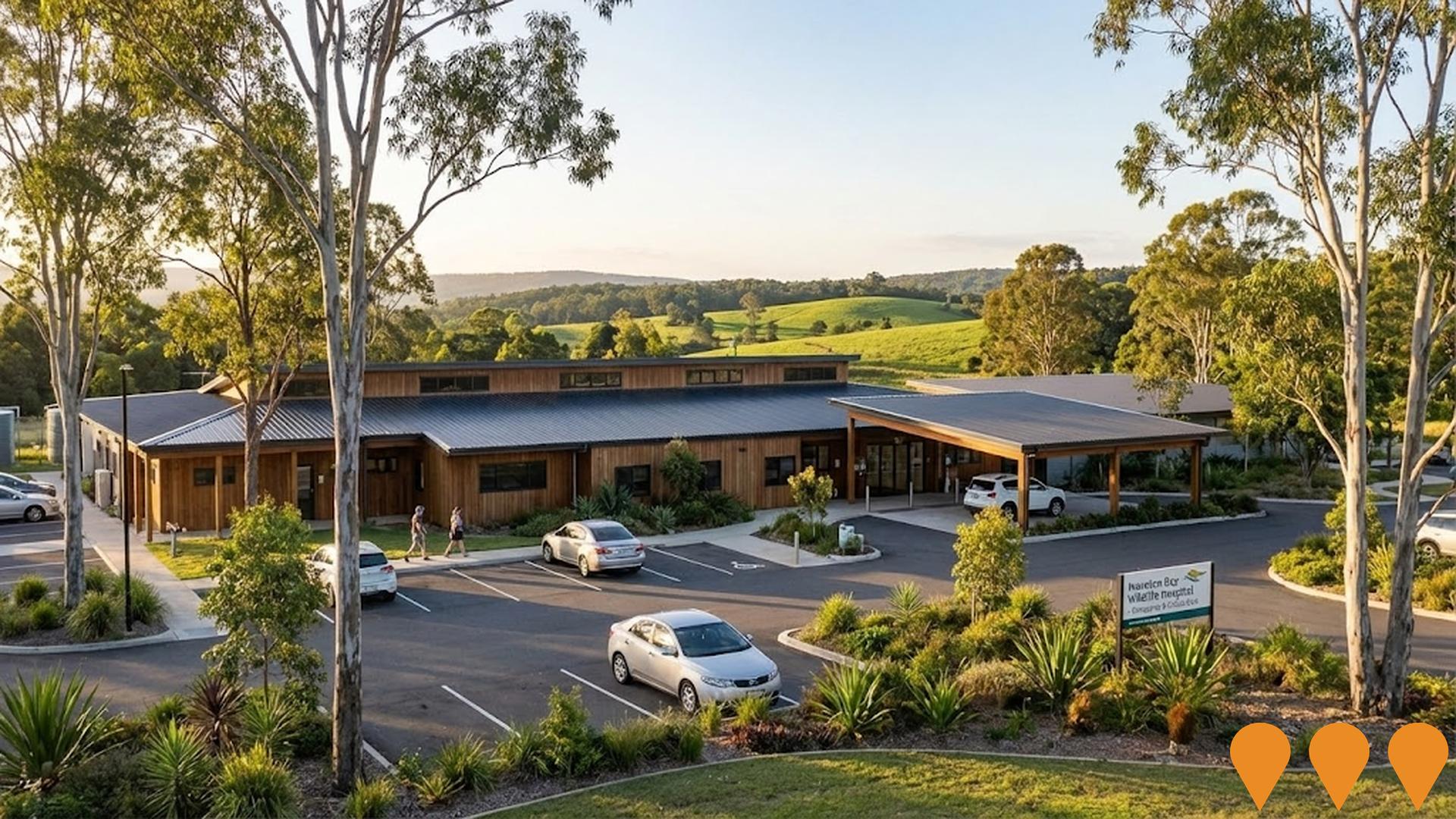
Bruce Highway - Anzac Avenue to Caboolture-Bribie Island Road Upgrade
Australian and Queensland Government-funded upgrade of the Bruce Highway between Anzac Avenue (Rothwell) and Caboolture-Bribie Island Road (Caboolture). The project widens the highway from 3 to 4 lanes each direction using the existing median between Anzac Avenue and Uhlmann Road, and introduces collector-distributor roads from Uhlmann Road to Caboolture-Bribie Island Road. Total estimated cost approximately $733 million (Anzac Avenue to Uhlmann Road section). Business case completed and approved for funding in 2024-25 Federal and State budgets. Detailed design and early works are underway, with major construction expected to commence 2026-2027 and completion targeted by 2032.
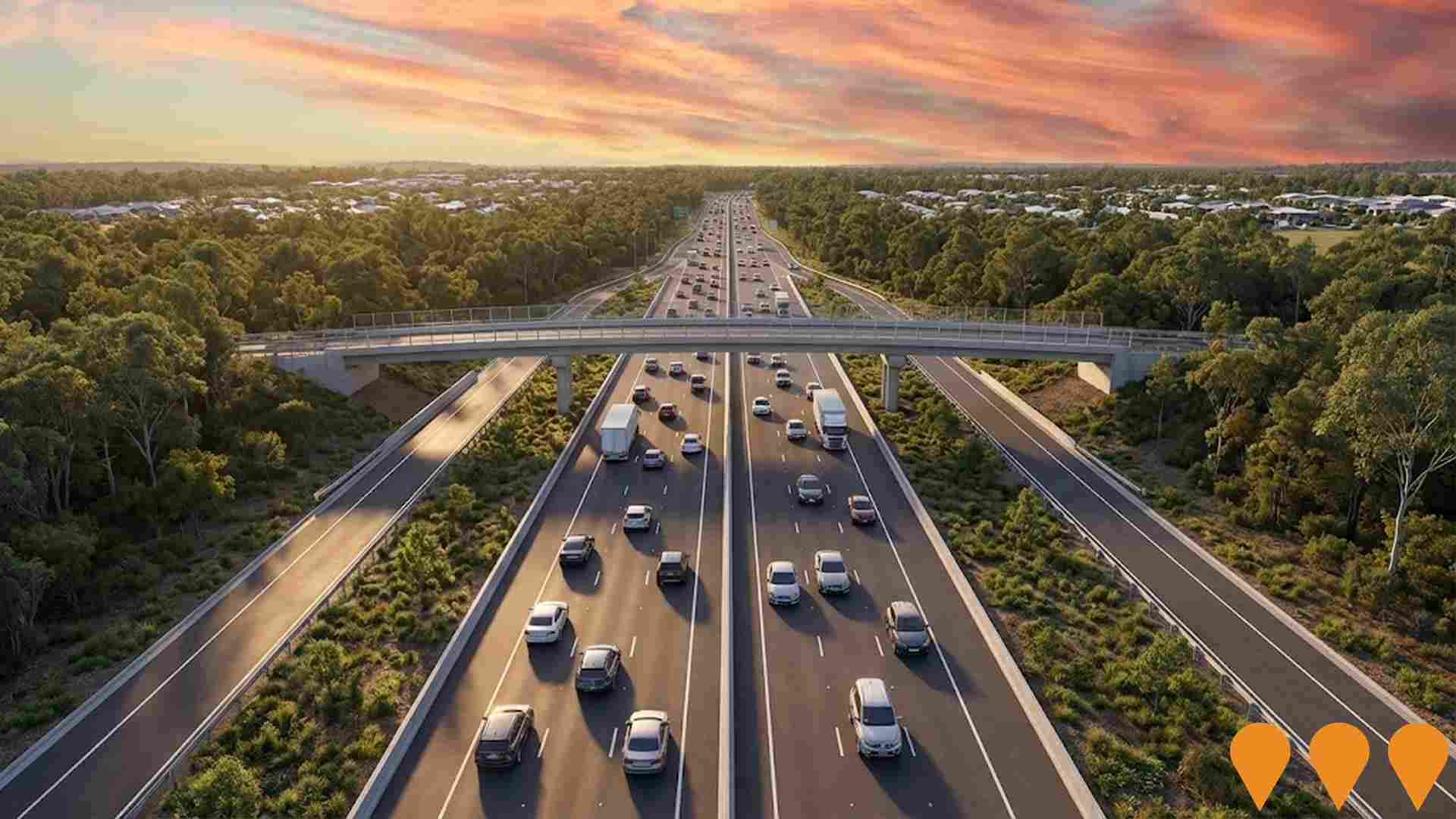
North Lakes Drive Mixed-Use Hotel Development
1.72 ha mixed-use development site opposite Westfield North Lakes, seeking expressions of interest for a 4-5 star hotel with conference and event facilities. The City of Moreton Bay is marketing the site for a landmark hospitality and tourism project to serve the growing North Lakes Town Centre and broader Moreton Bay region.

Mango Hill Urban Village
The current proposal, DA/2025/1375, is for a 10.4-hectare, transit-oriented, mixed-use urban precinct that triples the site's approved residential density. It features 23 towers (8 to 30 storeys) with 2,329 apartments, 118,023 sqm commercial space, 6,600 sqm retail/dining, and 1.23 hectares of public open space. The project aims to create 12,000 jobs. It is currently under review by Moreton Bay Regional Council. An earlier, less dense plan (DA/2025/4241 - extension of currency period) remains current in parallel with the new proposal. The new application seeks preliminary approval to vary the planning scheme for higher density.
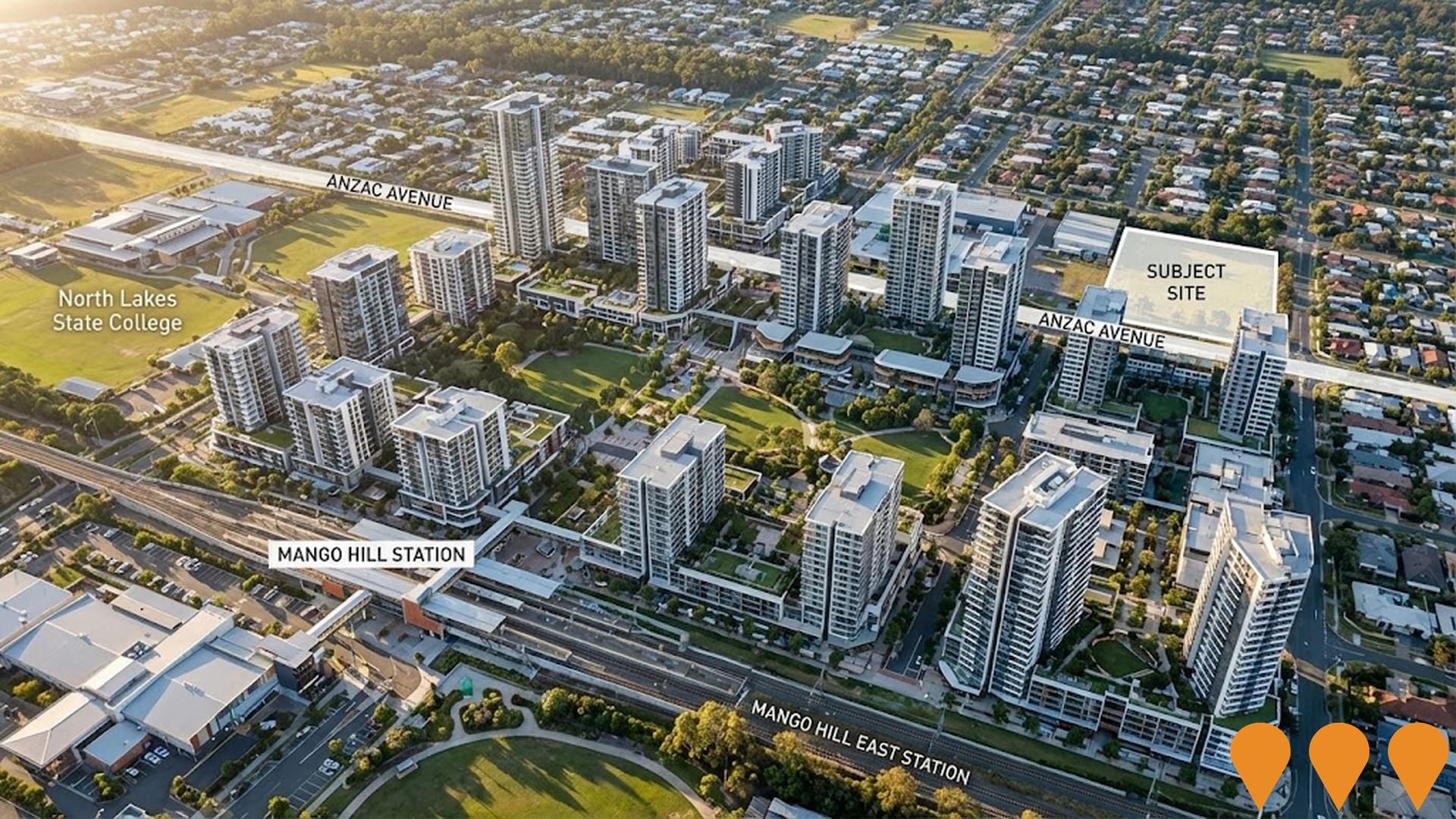
Freshwater Hub
Master-planned mixed-use precinct in Griffin comprising Freshwater Village (Woolworths-anchored neighbourhood centre with specialty tenancies and medical), Freshwater Harvest (urban farm), Freshwater Park (1.5ha parkland) and Freshwater Place (126-lot residential community). Road upgrades (Brays Rd widening, new signalised intersection and Arcadia Dr link) are underway. Tomkins Commercial appointed builder for Freshwater Village; opening targeted for late 2026 to early 2027.

North Lakes Industrial Development Site
A 25-hectare premium industrial development site that will deliver 100,000 square meters of quality industrial facilities. ESR Australia acquired the site from Garda Property Group for $114 million. Bulk earthworks have commenced with first buildings on track for early 2025 completion. The master-planned industrial park will include dedicated precincts supporting small, medium and large customers with 24/7 operations capability.

Old Gympie Road Upgrade - Anzac Avenue to Boundary Road
Major 4.7km arterial road upgrade from two to four lanes with new traffic signals at 10 intersections, dedicated cycle lanes, improved pathways, enhanced drainage infrastructure, and new public transport facilities. Currently serves 20,000 vehicles per day, expected to increase to 30,000. Includes eight stages over 10 years with detailed design by Arup Australia.
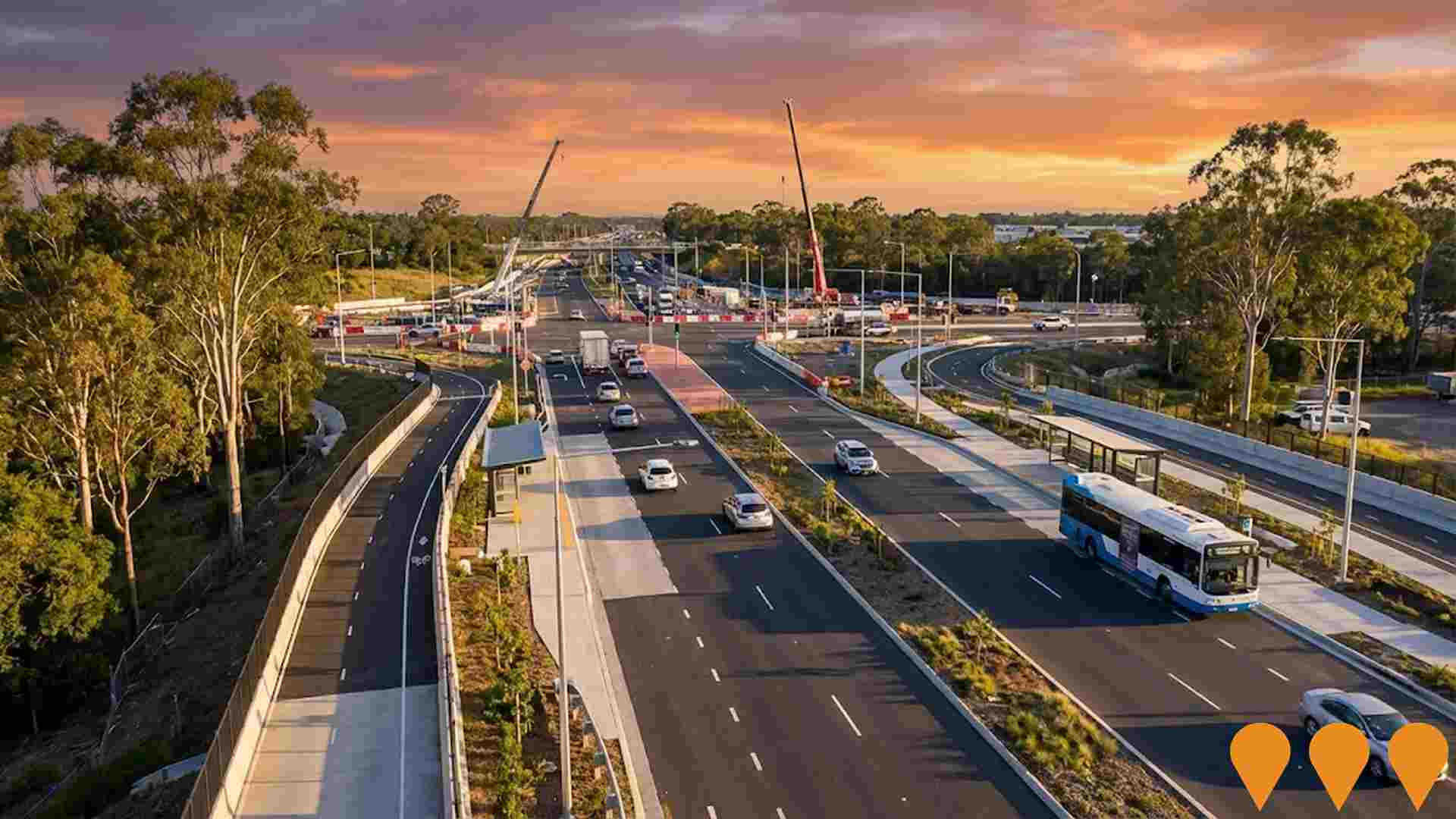
North Lakes Master Planned Community
Award-winning master planned community by Stockland spanning 1,036 hectares. Named Australia's Best Master Planned Community, featuring residential estates, town centre, schools, parks and recreational facilities. One of Queensland's most successful residential developments with excellent transport links including Redcliffe Peninsula Rail Line.
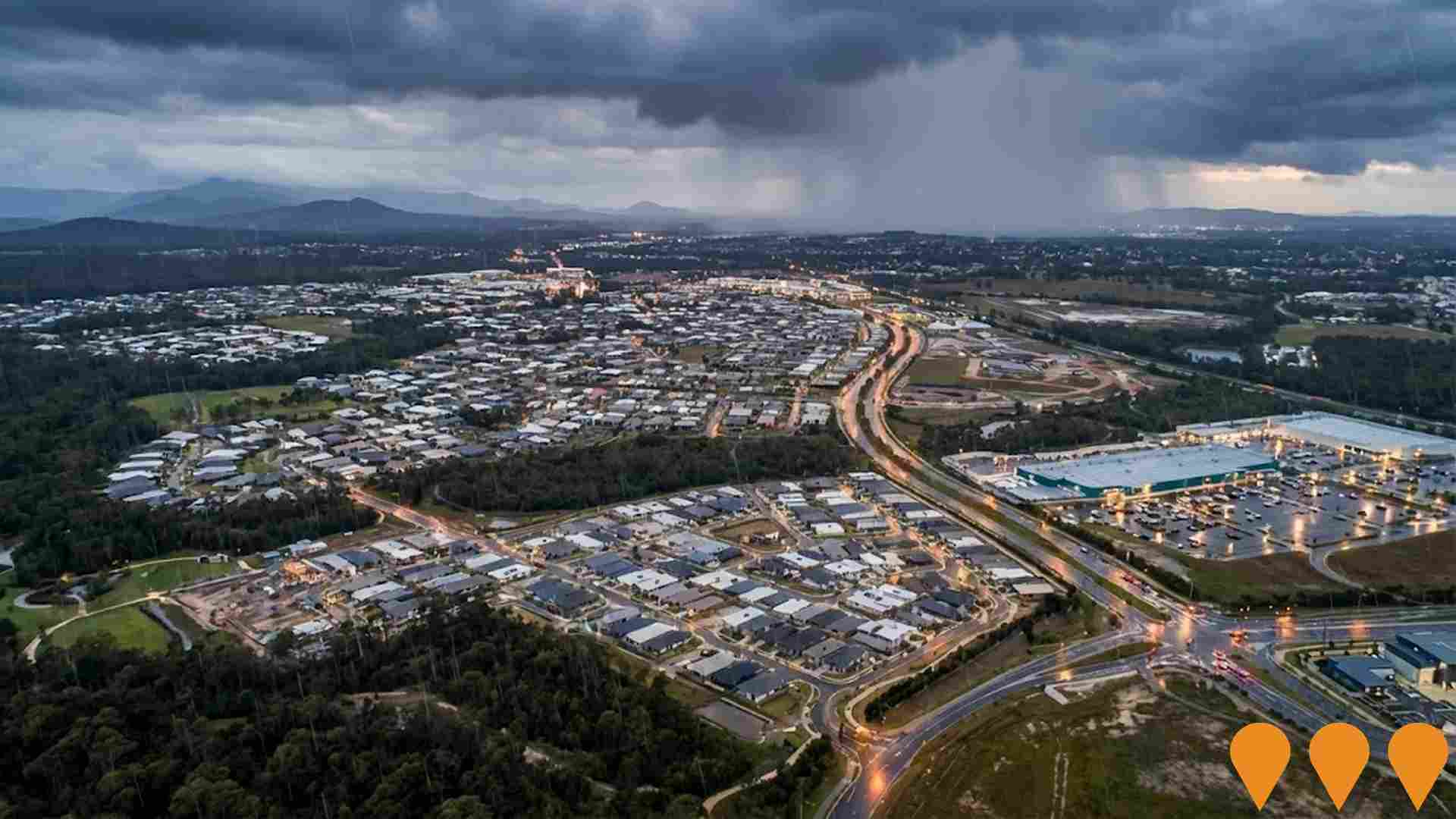
Employment
The employment environment in North Lakes shows above-average strength when compared nationally
North Lakes has a skilled labor force with prominent representation in essential services sectors. The unemployment rate was 4.5% as of June 2021, with an estimated employment growth of 6.4% over the previous year.
As of June 2025, there were 14,465 residents employed, and the unemployment rate stood at 4.9%, which is 0.8 percentage points higher than Greater Brisbane's rate of 4.1%. The workforce participation rate in North Lakes was 70.2% compared to Greater Brisbane's 64.5%. The dominant employment sectors among residents included health care & social assistance, retail trade, and education & training, with retail trade showing particularly notable concentration at 1.2 times the regional average. Conversely, professional & technical services had lower representation at 7.1%, compared to the regional average of 8.9%.
Between June 2024 and June 2025, employment levels increased by 6.4% in North Lakes, while the labor force grew by 7.5%, resulting in an unemployment rate rise of 1 percentage point. In comparison, Greater Brisbane recorded employment growth of 4.4%, labor force growth of 4.0%, and a decrease in unemployment by 0.4 percentage points. According to Jobs and Skills Australia's national employment forecasts from May 2025, national employment is projected to expand by 6.6% over five years and 13.7% over ten years. Applying these industry-specific projections to North Lakes' employment mix suggests local growth of approximately 6.7% over five years and 13.8% over ten years.
Frequently Asked Questions - Employment
Income
The area exhibits notably strong income performance, ranking higher than 70% of areas assessed nationally through AreaSearch analysis
North Lakes has a median taxpayer income of $56,801 and an average of $67,728 according to the latest postcode level ATO data aggregated by AreaSearch for financial year 2022. This is higher than national averages, with Greater Brisbane having a median income of $55,645 and an average income of $70,520. Based on Wage Price Index growth of 13.99% since financial year 2022, estimated incomes as of September 2025 would be approximately $64,747 (median) and $77,203 (average). According to Census 2021 income data, North Lakes incomes cluster around the 68th percentile nationally. Income distribution shows that 38.5% of North Lakes' population falls within the $1,500 - 2,999 range, which is consistent with broader regional trends at 33.3%. High housing costs consume 17.0% of income in North Lakes, but strong earnings place disposable income at the 70th percentile nationally. The area's SEIFA income ranking places it in the 6th decile.
Frequently Asked Questions - Income
Housing
North Lakes is characterized by a predominantly suburban housing profile, with above-average rates of outright home ownership
North Lakes' dwellings, according to the latest Census, consisted of 84.9% houses and 15.1% other dwellings (semi-detached, apartments, 'other'). Brisbane metro had 75.0% houses and 25.0% other dwellings. Home ownership in North Lakes was higher at 18.3%, with mortgaged dwellings at 43.0% and rented ones at 38.8%. The median monthly mortgage repayment was $1,950, above Brisbane metro's average of $1,820. Median weekly rent in North Lakes was $420, compared to Brisbane metro's $380. Nationally, North Lakes' mortgage repayments were higher at $1,950 versus the Australian average of $1,863, and rents were substantially above the national figure of $375.
Frequently Asked Questions - Housing
Household Composition
North Lakes features high concentrations of family households, with a higher-than-average median household size
Family households account for 82.1% of all households, including 43.7% couples with children, 24.3% couples without children, and 13.4% single parent families. Non-family households make up the remaining 17.9%, consisting of 15.7% lone person households and 2.2% group households. The median household size is 2.9 people, larger than the Greater Brisbane average of 2.8.
Frequently Asked Questions - Households
Local Schools & Education
The educational profile of North Lakes exceeds national averages, with above-average qualification levels and academic performance metrics
North Lakes has 26.5% of residents aged 15+ with university qualifications, exceeding the SA3 area average of 22.3%. Bachelor degrees are most common at 18.2%, followed by postgraduate qualifications (5.6%) and graduate diplomas (2.7%). Vocational credentials are held by 38.5% of residents aged 15+, with advanced diplomas at 13.6% and certificates at 24.9%.
Educational participation is high, with 34.1% of residents currently enrolled in formal education. This includes 12.4% in primary, 10.3% in secondary, and 5.0% in tertiary education. North Lakes has 4 schools with a combined enrollment of 4,889 students, operating under typical Australian school conditions (ICSEA: 1019). The educational mix includes 1 primary, 1 secondary, and 2 K-12 schools.
Frequently Asked Questions - Education
Schools Detail
Nearby Services & Amenities
Transport
Transport servicing is moderate compared to other areas nationally based on assessment of service frequency, route connectivity and accessibility
North Lakes has 45 active public transport stops, all of which are bus stops. These stops are served by 11 different routes that together facilitate 2,398 weekly passenger trips. The area's transport accessibility is deemed good, with residents on average being located 288 meters from their nearest transport stop.
Across all routes, service frequency averages 342 trips per day, which translates to approximately 53 weekly trips per individual stop.
Frequently Asked Questions - Transport
Transport Stops Detail
Health
The level of general health in North Lakes is notably higher than the national average with prevalence of common health conditions low among the general population though higher than the nation's average across older, at risk cohorts
North Lakes shows better-than-average health outcomes with lower prevalence of common conditions in its general population compared to national averages. However, older, at-risk cohorts have higher prevalence rates.
Private health cover is relatively high here, at approximately 53% (~13,236 people), compared to Greater Brisbane's 51.3%. Mental health issues and asthma are the most common conditions, affecting 8.8 and 7.3% of residents respectively. About 72.2% of residents report no medical ailments, slightly higher than Greater Brisbane's 69.9%. The area has a senior population (aged 65+) of 12.1%, totaling 2,996 people. Health outcomes among seniors require more attention due to presenting challenges compared to the broader population.
Frequently Asked Questions - Health
Cultural Diversity
North Lakes was found to be more culturally diverse than the vast majority of local markets in Australia, upon assessment of a range of language and cultural background related metrics
North Lakes, surveyed in June 2016, had a higher proportion of residents speaking languages other than English at home, with 18.5%, compared to the majority of local markets. Born overseas, 35.7% of North Lakes' population was recorded. Christianity was the predominant religion, with 48.4%.
However, the category 'Other' showed an overrepresentation in North Lakes at 2.0%, compared to Greater Brisbane's 2.7%. In terms of ancestry, English (27.7%), Australian (22.8%), and Other (10.1%) were the top three groups. Notably, South African ancestry was higher at 1.7% in North Lakes than regionally at 1.0%, New Zealand was at 1.5% (matching regional figures), and Maori was also at 1.5%.
Frequently Asked Questions - Diversity
Age
North Lakes's population is younger than the national pattern
North Lakes's median age is 35 years, nearly matching Greater Brisbane's average of 36 years but somewhat younger than Australia's 38 years. Compared to Greater Brisbane, North Lakes has a higher concentration of residents aged 5-14 (15.3%) but fewer residents aged 25-34 (12.8%). Between the 2021 Census and the present, the population of those aged 55-64 has grown from 8.4% to 9.6%, while the population of those aged 15-24 increased from 13.3% to 14.4%. Conversely, the population of those aged 5-14 has declined from 17.1% to 15.3%. Population forecasts for North Lakes in 2041 indicate substantial demographic changes. The cohort aged 75-84 is projected to grow by 61%, adding 675 residents to reach a total of 1,786. Residents aged 65 and above are expected to drive 66% of population growth, highlighting demographic aging trends. Conversely, population declines are projected for the cohorts aged 0-4 and 15-24.
